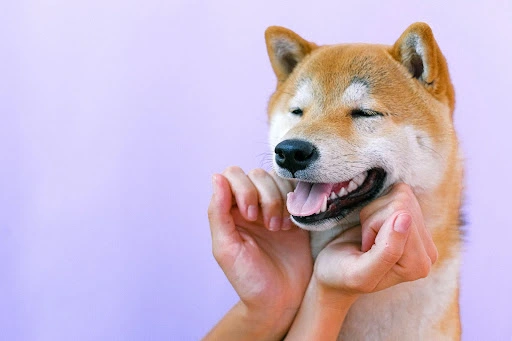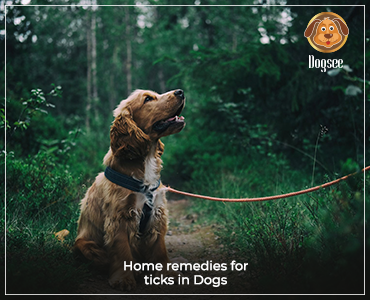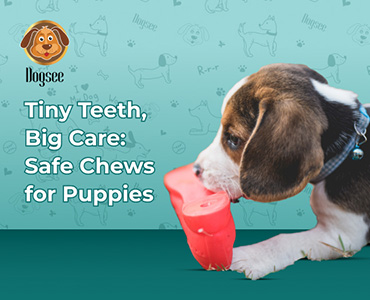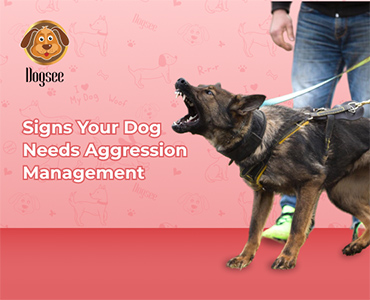
'There are hundreds of languages around the world, but a dog's smile speaks them all….'
Immersed in the world of daily dog walks, regular vet visits, and giving quality nutrition, life as a dog parent can be stressful at times. But it's no surprise when you see a dog smile; all of it feels worth it. The face of the dog showing a little tongue and teeth melts away all the stress into joy and happiness.
Have you ever wondered what makes your furry friend flash a wide grin or how to get a dog to smile by giving Dogsee Training Treats and following a few simple steps? Read on to know more about it.
Do dogs smile? If so, what are they trying to communicate?
Watching your dog smile might be very high up on the happiness scale. But, dogs do not laugh or smile in the same way as humans do. Many dog expressions, including panting, submissive grins or simply a muscular reflex, can be interpreted as a "smile."
Scientists believe that smiling in dogs is more of a learned response than instinctive. For the personality of a dog as a natural imitator and the years of interaction it has had with humans, it is fair to believe that dogs have developed this communication skill. This doesn't keep us from the fact that dogs can smile. But, to express happiness? Let's find out.
A smiling dog isn't always a happy dog!
Before you look at your dog's smile and think he's all happy, know this: Part of the dog's personality is that they don't smile for the sake of smiling. A dog's smile is a way for it to communicate and share an emotion. And that emotion isn't always happiness. Dogs also smile when they are
Feeling Relaxed: Soft eyes, lips not drawn back and ears sitting in a natural position. Dogs with this smile are safe, relaxed, and at ease.
Feeling Tired: Ears drawn back against the head, tensed facial muscles and eyes wide open are all signs of your dog panting caused by stress.
Submitting: Lips pulled back and little teeth exposed; this is the dog's look when giving a submissive grin.
So, for every time your dog gives a relaxed smile, treat them wit soft dog training treats.
How to teach a dog to smile?
It's a win when you teach your dog a trick, and it nails it in front of everyone - a true moment of pride, right?
Like basic commands of sit, stay and come, you can also teach your dog to smile on command. The only disclaimer is that it requires a few tricks and a lot of patience. Let's see some steps to get your dog to smile on command.
Step1- Know the Basics
Whatever command you are teaching your dog, there are a few things every dog parent should be aware of before beginning training.
Training time with your dog should be enjoyable, rewarding, and fulfilling for both of you. It is critical to ensure that your dog is happy and comfortable. Remember that a bit of positivity and patience can help your dogs learn quickly. Make sure your dog is relaxed and content. Be positive and patient; it's a great way to help your dogs learn while having fun.
Step 2- Know your Dog's Behaviour
Before teaching your dog to smile, you must first understand their body language to determine whether their grin is submissive or genuine. As dogs show their teeth when giving a submissive grin while showing aggression and smiling, you don't want to accidentally teach your dog to snarl by misinterpreting it as a smile.
Step 3- Reward with a Treat
Treats are an excellent motivator for any dog. Reward your dog for responding to your command with love, a few words of praise, and the well-earned Dogsee training treats. While we are at it, keeping your dog's health in mind is also essential. Rely on natural and preservative-free products, like Dogsee Crunch Apple - Made with fresh apples; it keeps your dog’s skin healthy and coat shiny.
To pique your dog's interest, experiment with different types of dog treats. Your dog will become bored if he eats the same thing every day. You can try different Dogsee Crunch flavours for a healthy, flavourful meal.

Reward your dog with Dogsee Crunch Banana - Made with fresh bananas, it contributes to the growth of muscles and bones and is ideal for your dog’s health.
Step 4 - Catch the Behaviour
It's all about timing when teaching a dog to smile. You have to pay attention to your dog's behaviour and as you see the dog lifting its lips, give the command and reward with treats right after it.
Step 5- Repeat the Process
Say 'smile' and reward a treat. The key point is that the more you do this, the better the dog will catch it and begin to follow the command. So, repeat the command 5 to 15 times daily until the dog has mastered the behaviour.
Step 6- Stay Consistent
Consistency is the key to successful dog training. This includes being consistent during training and in the rules and methods. Every day, train your dog at the same time for the same amount of time to avoid confusion and establish a routine for your dog.
Find more commands to teach your dog from our 20 Essential Dog Training Commands/ Orders list (Basic to Advanced)
A dog's smile is usually associated with 'the happy dog', but that's not the case. There are plenty of reasons for a dog's smile; it might be an expression of excitement or tiredness or just a dog in a relaxed state. Regardless of the reason for a dog's smile, our hearts get warm like nothing else after seeing it! And getting it done on command might also fill it with a little pride.
One of the many tricks you can teach your dog is smiling on command. It is an unusual trick and will undoubtedly impress anyone who sees your dog's adorable smile. It takes a few tricks and a lot of time and patience.
Smile! You know how to teach your dog to make a happy, open-mouthed expression.
 HELPFUL0 people found it helpful
HELPFUL0 people found it helpful
Related Blogs
Subscribe to Our Blogs
and never miss on the latest update!



















